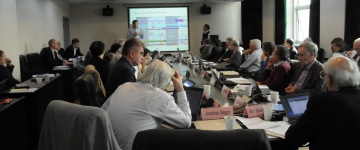Image of the week
Power recovery at KEK, JapanPower cable being recovered at the Accelerator Test Facility at KEK in Japan (April 2011). |
In the News
-
From NIU Today6 April 2011Chakraborty has led design of calorimeters and software that would be used at the proposed International Linear Collider, a next generation accelerator.
-
From New York Times5 April 2011Physicists at the Fermi National Accelerator Laboratory are planning to announce Wednesday that they have found a suspicious bump in their data that could be evidence of a new elementary particle or even, some say, a new force of nature.
-
From Interactions1 April 2011Scientists from across the world are celebrating the successful start up of the pioneering EMMA accelerator which is set to impact fundamental science and change the way such particle accelerators across the world are designed and built in the future.
-
From Nature1 April 2011A revised calculation suggests that around 3% of particles have gone missing from nuclear reactor experiments.
-
From physorg.com31 March 2011In new work, high-energy physicists have observed two long-sought quantum states in the bottomonium family of sub-atomic particles. The result will help researchers better understand one of the four fundamental forces of the universe — the strong force — that helps govern the interactions of matter.
-
From physicsworld.com31 March 2011This video report for physicsworld.com brings an update from the particle-physics lab near Geneva on the search for the Higgs and new physics beyond the Standard Model.
-
From symmetry breaking30 March 2011Physicists at the LHCb experiment at the Large Hadron Collider recently reported the first observations of a new way that particles called Bs mesons decay into other particles. Studying this particular decay could provide clues as to why the universe is made up of matter rather than antimatter.
Copyright © 2024 ILC International Development Team




